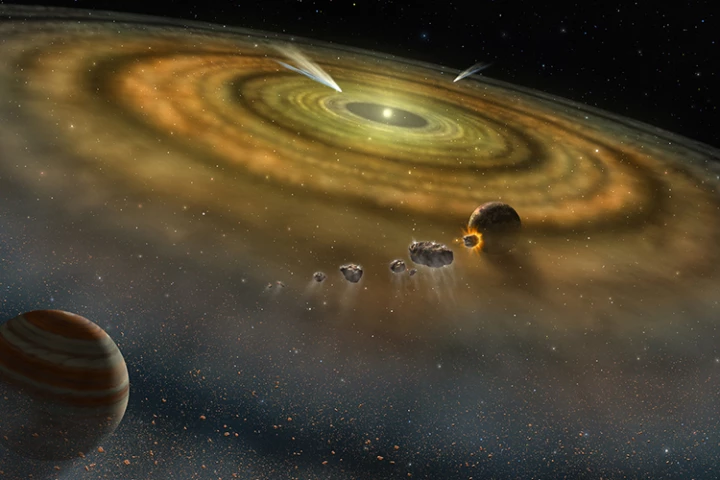Lawrence Livermore National Laboratory
-
While 3D printing is a burgeoning technology, it's limited by the fact that items can only be printed from a single material. A new system still uses just one print resin, but that substance can form into two different solid materials as needed.
-
A frothy breakthrough at Lawrence Livermore National Laboratory (LLNL), using lasers with a silver metal foam that's as light as air, has created the brightest yet X-ray source ever, twice as brilliant as that of anything previous.
-
With the promise of unlimited energy, Xcimer has raised over US$100 million from investors and the US Department of Energy to develop a high-energy laser system that's intended for use in a practical fusion power plant.
-
Lawrence Livermore National Laboratory has published an extensive paper confirming the validity of its 2022 fusion experiment where multiple lasers focused on a sphere of deuterium and tritium to achieve the first fusion ignition in a laboratory.
-
Although an increasing number of devices are being developed for use on or in our bodies, such devices tend not to be very … "body-like." A new 3D printing resin could change that, by allowing for variable stiffness throughout single objects.
-
For the prospect of limitless, clean energy produced through nuclear fusion to become a reality, scientists need the reactions at the heart of the technology to become self-sustaining, and newly published research has edged them closer to that goal.
-
"Extraordinary results" from experiments with an extraordinarily high-powered laser have just taken us a whole lot closer to the goal of fusion ignition, where the energy generated through nuclear fusion is enough to trigger a runaway effect.
-
Scientists have recreated in the lab some of the wild weather that might be found on Jupiter and Saturn. Using extremely high pressures and laser shock waves, the researchers produced helium rain which has been hypothesized to fall on these planets.
-
Based on isotope analysis of meteorites, scientists at the Lawrence Livermore National Laboratory have determined that our solar system may have formed much faster than previously thought.
-
Analysis of Saturn’s interior describes jet streams that continue deep below the surface and thick liquid that “flows like honey”.
-
How safe would you feel, going back into a multi-story building that had just been through an earthquake? A new sensor system could allay your fears, as it optically measures how much a building has swayed, and thus how damaged it may be.
-
Scientists from Lawrence Livermore National Laboratory's Forensic Science Center and Michigan State University have established that it's possible to identify a person from a single hair taken from anywhere on the human body.
Load More











